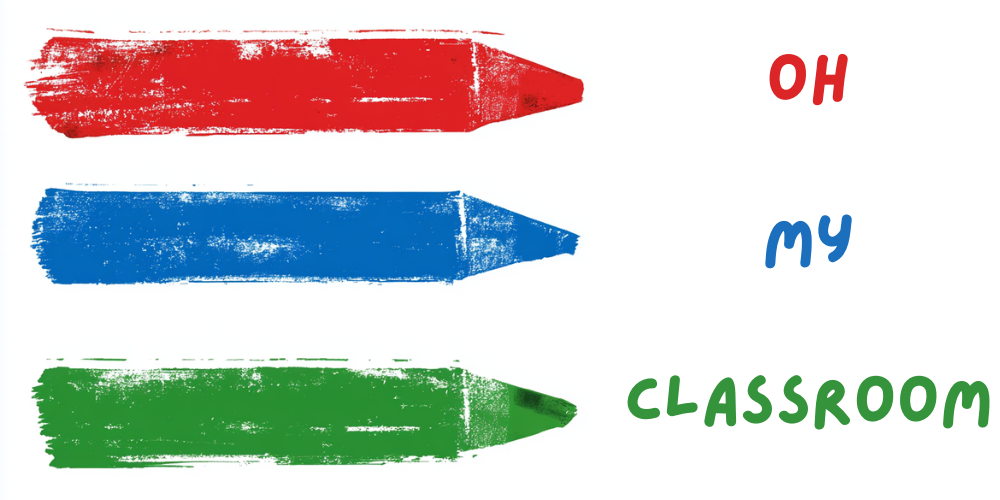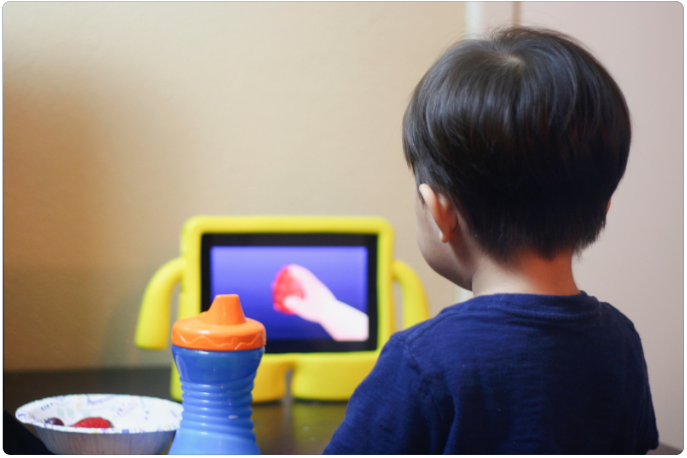In today’s digital world, it’s important to strike a balance and offer engaging alternatives to screen time.
This is especially crucial for young children, whose development thrives on active exploration, hands-on learning, and social interaction.
Get ready to unplug and unleash the magic of play with a variety of exciting screen-free activities for toddlers or preschooler’s imagination, creativity, and overall well-being!
Sensory Play with Homemade Playdough:
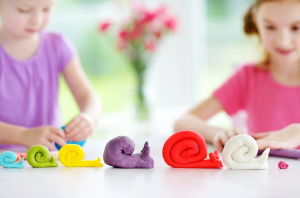
Making playdough is a simple and enjoyable activity that can keep your little one entertained for hours. Combine 2 cups of flour, 1 cup of salt, 2 tablespoons of cream of tartar, 2 tablespoons of vegetable oil, and 1.5 cups of boiling water. Mix the ingredients thoroughly until a smooth dough forms. Allow the dough to cool before giving it to your toddler.
Nature Scavenger Hunt:
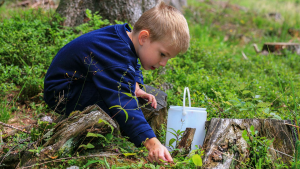
Head to a local park or your backyard and create a list of items for your child to find, such as leaves, rocks, flowers, and pinecones. Provide them with a small basket or bag to collect their treasures. As they search for each item, encourage them to touch, smell, and observe the objects they find.
DIY Musical Instruments:
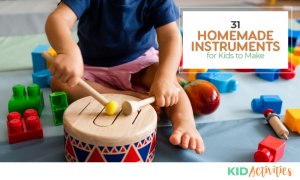
Gather household items like empty water bottles, rice or dried beans, and tape. Fill the bottles with different amounts of rice or beans to create different sounds. Secure the caps and let your toddler shake and explore their homemade shakers. You can also make drums using empty oatmeal containers and wooden spoons as drumsticks.
Building Blocks and Towers:

Building blocks are classic toys that provide endless opportunities for imaginative play and problem-solving. Encourage them to stack and arrange the blocks, promoting their hand-eye coordination, spatial awareness, and fine motor skills. As their skills progress, challenge them to build taller towers or even simple structures like houses or bridges. Engaging in block play not only stimulates their creativity but also enhances their cognitive abilities and understanding of cause and effect.
Water Play:
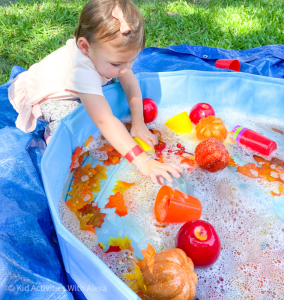
Fill a small basin or tub with water and provide your child with cups, spoons, and containers for pouring and scooping. You can also add some bath toys or floating objects for additional fun. Allow your toddler to freely explore the water, splash, and pour to their heart’s content. Supervise them closely and ensure the water level is safe for their age. Water activities not only stimulates their senses but also promotes their hand-eye coordination, spatial awareness, and understanding of volume and capacity.
Sensory Bin Exploration:

Create a sensory bin filled with various materials like rice, dry pasta, colored sand, or dried beans. Add in some scoops, funnels, and small toys for your toddler to discover and manipulate.
Puppet Show:
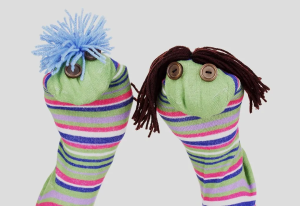
Encourage your toddler’s imagination and language development by putting on a puppet show together. Create simple puppets using socks, paper bags, or even stuffed animals. Use your voices to bring the characters to life and engage in a playful storytelling session.
Obstacle Course:
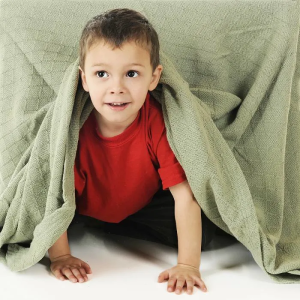
Set up a mini obstacle course in your living room or backyard using pillows, cushions, hula hoops, and tunnels. Create challenges like crawling under a tunnel, jumping over pillows, or balancing on a designated line.
Homemade Binoculars and Nature Walk:
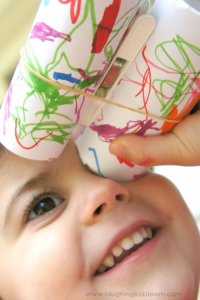
Craft homemade binoculars by taping two toilet paper rolls together and decorating them with markers or stickers. Take your toddler on a nature walk around the neighborhood or a nearby park, encouraging them to observe and identify different plants, birds, or insects through their binoculars.
Sensory Painting:

Set up a large sheet of paper or use an easel and provide washable, non-toxic paint in various colors. Instead of using brushes, encourage your child to use their hands, fingers, or even objects like sponges or toy cars to spread and mix the paint.
Sensory Bottles:
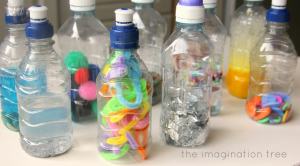
Create sensory bottles by filling empty clear plastic bottles with various materials like colored water, glitter, beads, or small objects. Seal the bottles tightly and let your toddler explore the different visual and auditory effects as they shake, roll, and observe the contents. Sensory bottles provide calming sensory input and promote focus and concentration.
Story Time and Puppets:
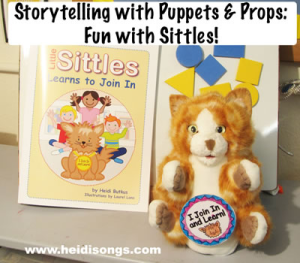
Choose a favorite story and assign different characters to puppets or stuffed animals. As you read the story aloud, encourage your child to interact by using the puppets to act out scenes or retell parts of the story.
Cooking or Baking Together:

Let them assist in measuring ingredients, stirring, or pouring, depending on their age and abilities. Choose age-appropriate recipes like no-bake cookies or homemade fruit popsicles.
DIY Shape Sorting Game:
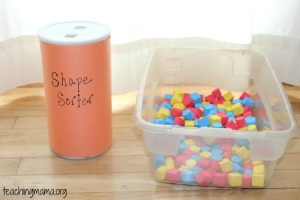
Cut out different shapes from the construction paper and glue them onto a flat surface. Then, collect small toys or objects that correspond to each shape.
Indoor Picnic:
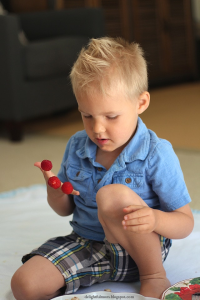
Have an indoor activity for kids on a rainy day or when you simply want a change of scenery. Spread out a picnic blanket on the floor, pack some snacks, and enjoy a meal together in a different setting. Bring along some books or toys for entertainment.
Shadow Play:
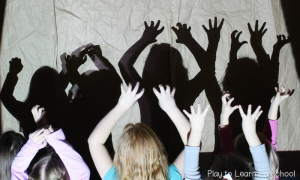
Create a shadow play area by setting up a table lamp or flashlight and a white sheet or wall. Arrange objects or toys in between the light source and the sheet to cast interesting shadows.
Nature Collage:
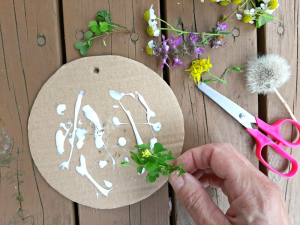
Take your toddler on a nature walk and collect various natural materials like leaves, flowers, twigs, and pebbles. Back at home, provide them with a large sheet of paper, glue, and crayons.
Sensory Obstacle Course:
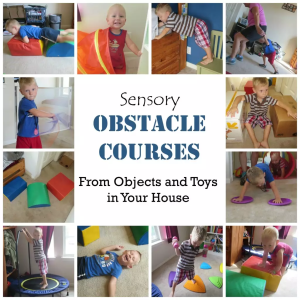
Design a sensory obstacle course using different textures and materials. Set up stations with activities like crawling through a fabric tunnel, walking on a foam mat, stepping on bubble wrap, or balancing on pillows.
Homemade Puzzles:

Create simple homemade puzzles by cutting out pictures or drawings and gluing them onto cardboard or cardstock. Then, cut the picture into several pieces to create puzzle shapes. Start with fewer pieces and gradually increase the difficulty as they become more proficient.
Dance Party:

Clear a space in your living room and have a dance party with your toddler. Play their favorite upbeat music and encourage them to move and groove to the rhythm. You can also provide scarves or ribbons for them to dance with, enhancing their coordination, creativity, and self-expression.
Sensory Bin with Water Beads:
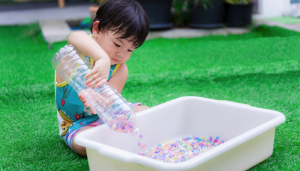
Create a sensory bin filled with water beads, which are small, colorful, and squishy gel beads that expand when soaked in water. Allow your toddler to explore the texture, scoop them up, transfer them between containers, and even squeeze them gently.
Outdoor Nature Art:
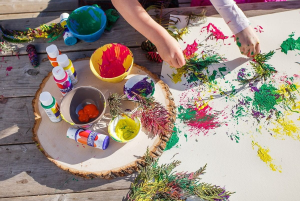
Take your toddler outdoors and let them create art using natural materials they find, such as leaves, flowers, sticks, and rocks. Find a smooth surface like a sidewalk or a large piece of cardboard, and provide washable paints or chalk.
Sensory Shaving Cream Play:

Cover a table or tray with a layer of shaving cream and let your toddler dive into a sensory play experience. They can explore the texture, make handprints, swirl patterns, and even practice drawing shapes or letters. Just make sure they don’t ingest any shaving cream.
Indoor Camping:
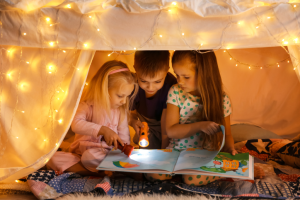
Create a cozy indoor camping activity for your toddler. Set up a tent or build a fort using blankets and pillows. Add some stuffed animals, flashlights, and books. Encourage pretend play, storytelling, and even a picnic-style snack.
DIY Sensory Boards:

Make your own sensory boards by attaching different materials to a wooden board or cardboard. Use materials like sandpaper, felt, bubble wrap, fabric, buttons, or zippers. Let your toddler explore the different textures, shapes, and sounds as they touch and manipulate the sensory boards.
Playdough Sculptures:
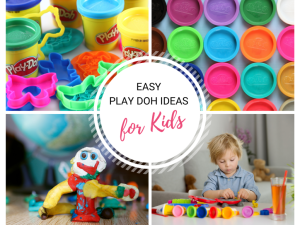
Encourage your toddler’s creativity and fine motor skills by engaging in things made with playdough sculpting. Provide them with different colors of play dough and simple tools like plastic knives, cookie cutters, or rolling pins.
Color Sorting:
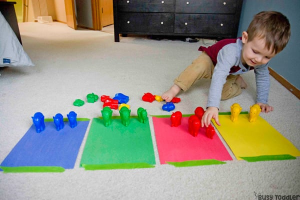
Set up a color sorting activity by gathering objects or toys in different colors. Prepare containers or trays labeled with the corresponding colors. Encourage your toddler to sort the objects by placing them into the correct containers based on their colors.
Bubble Play:
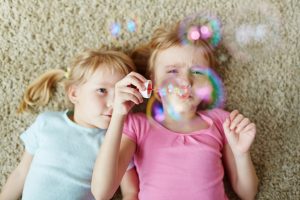
Take advantage of the joy and wonder of bubble games. Set up a bubble station with a bubble solution and different bubble wands. Encourage your toddler to blow bubbles, chase and pop them, or use the wands to create bubble art.
DIY Sensory Bottles:
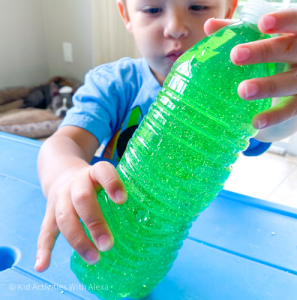
Create sensory bottles filled with various materials like colored water, oil, glitter, or sequins. You can also add small items like beads or buttons. Seal the bottles tightly and let your toddler explore the different visual effects and movements of the materials inside.
Sticker Collage:

Provide your toddler with a large sheet of paper and a variety of stickers in different shapes, sizes, and themes. Let them stick the stickers onto the paper, creating their own unique collage.
